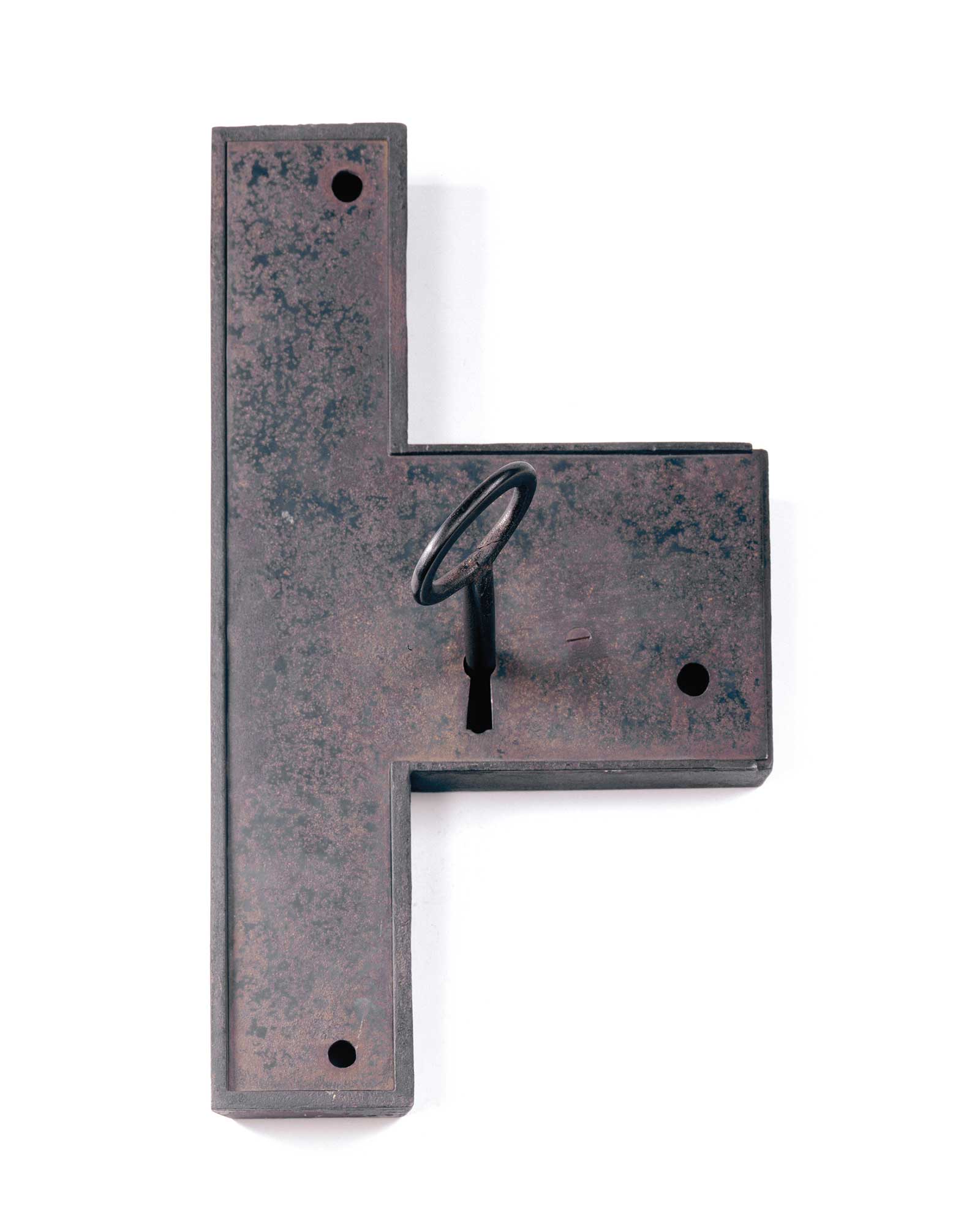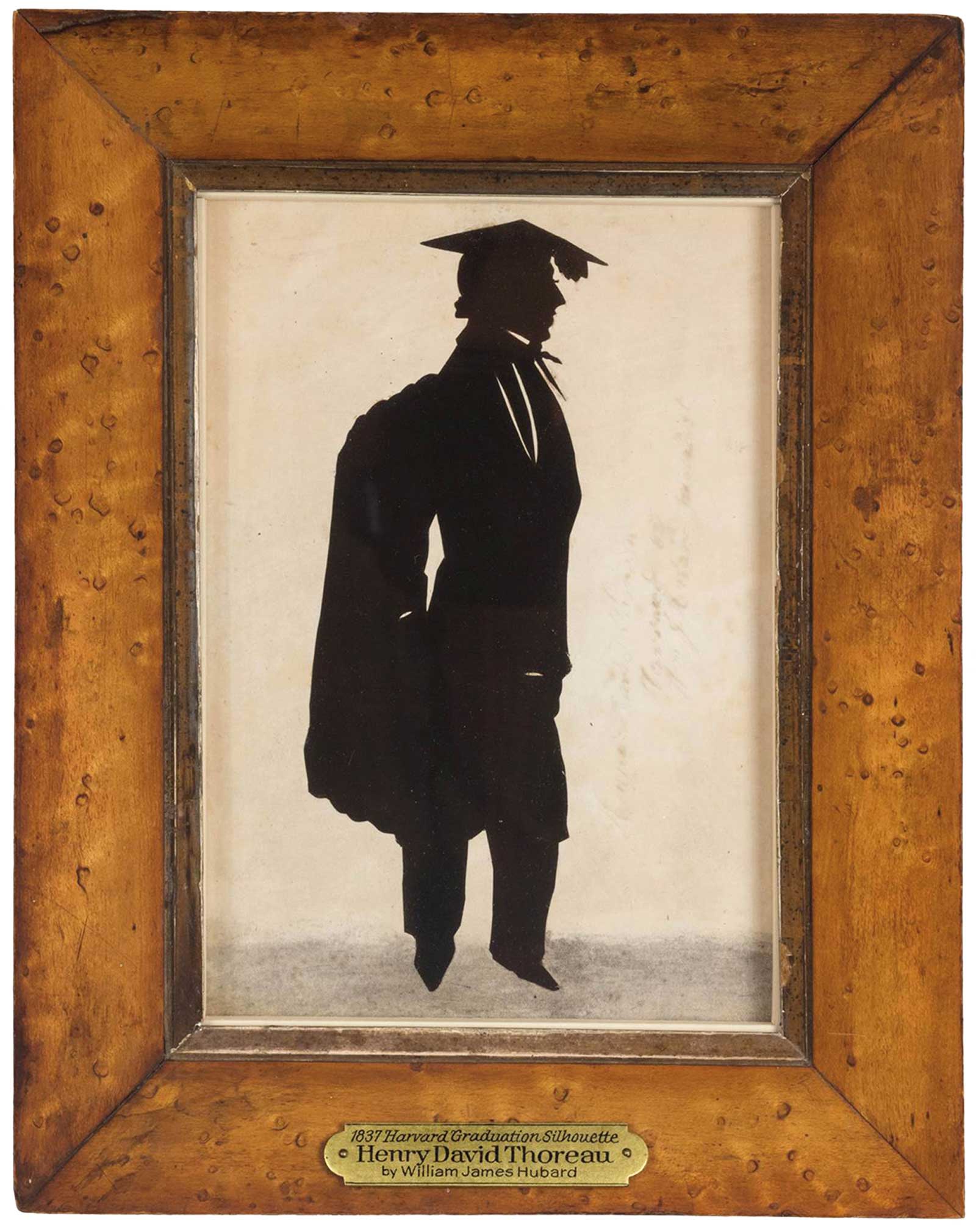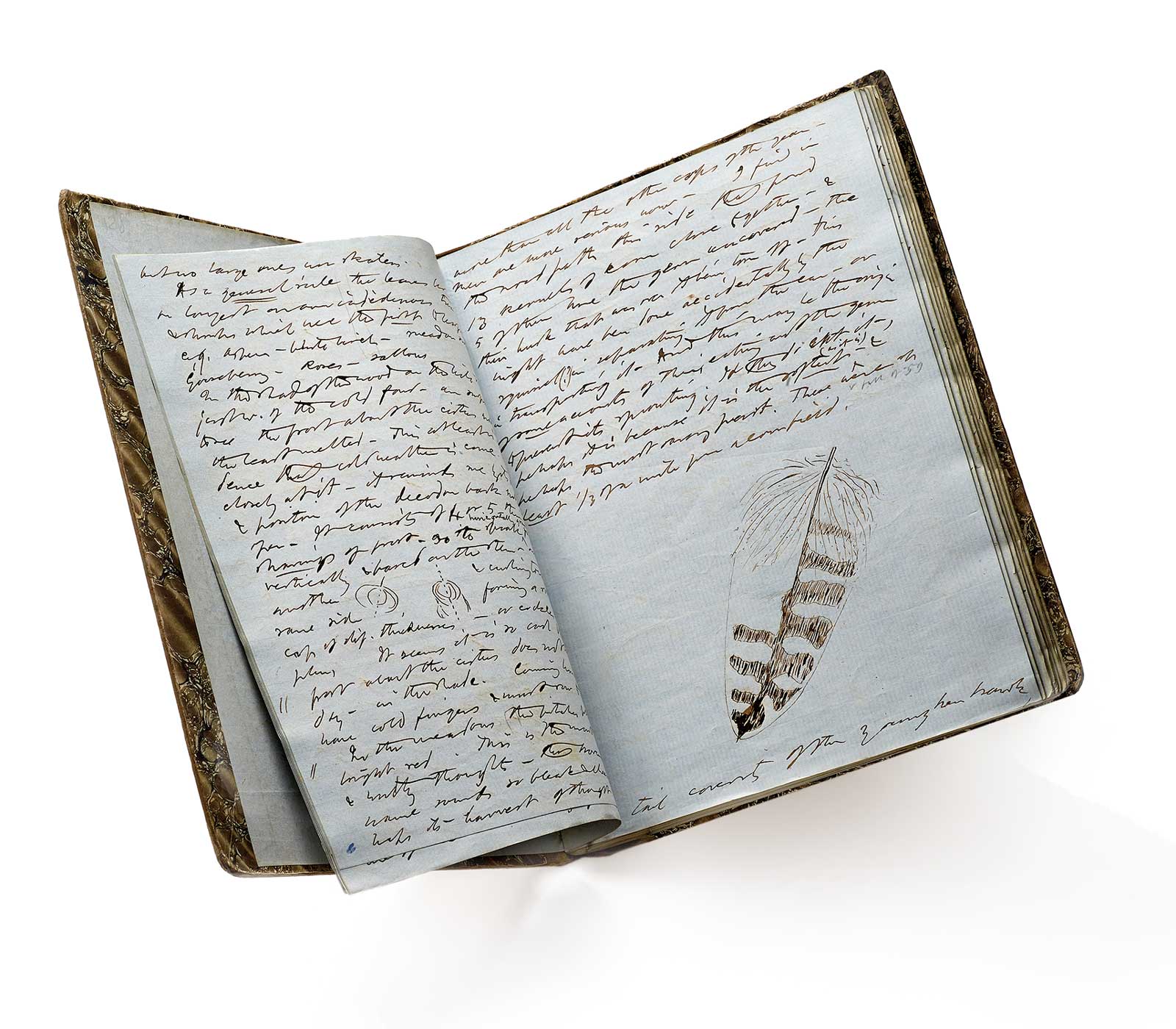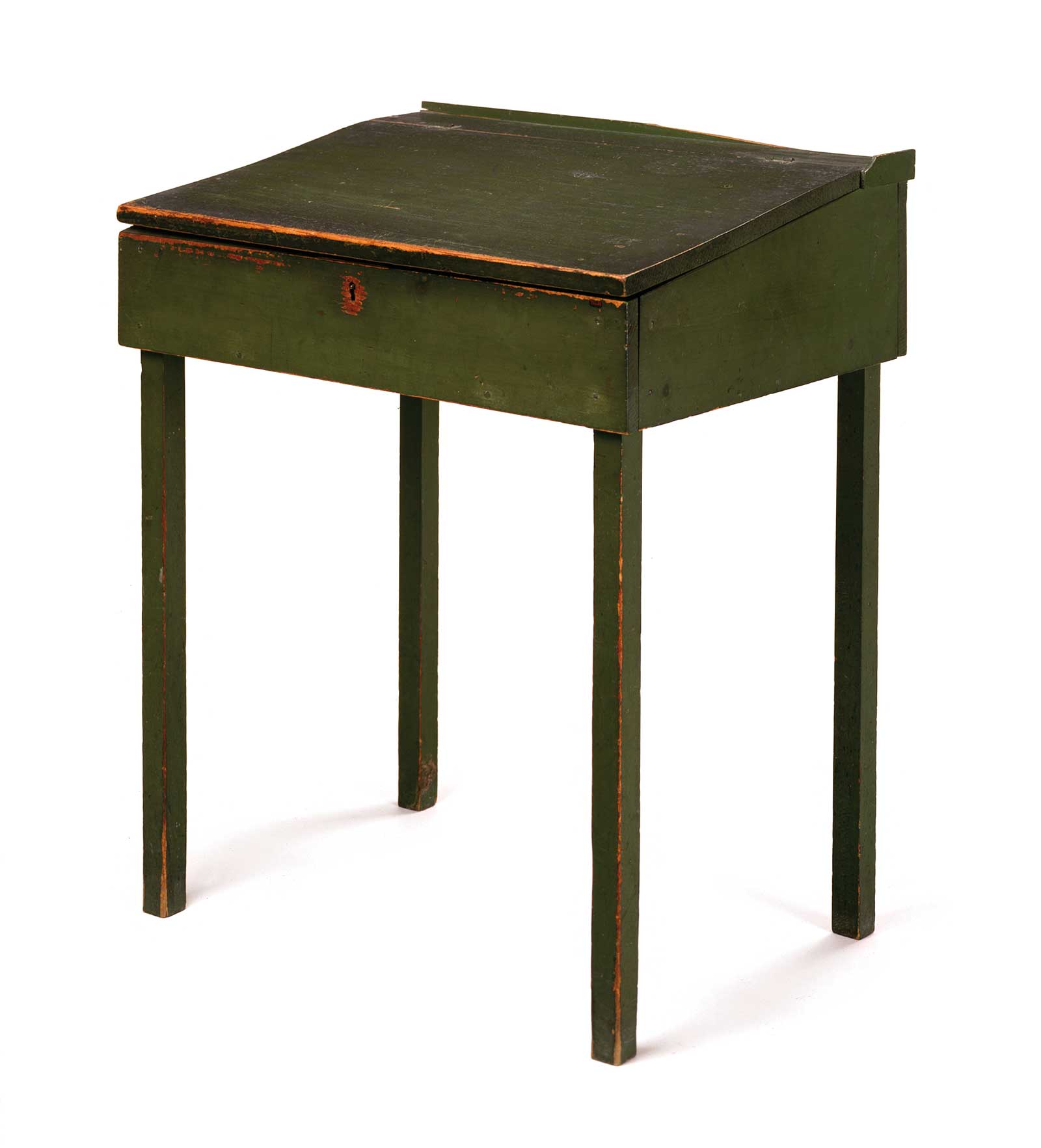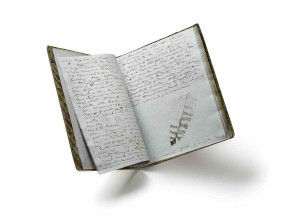His tenacity manifests itself in the journal, too. While Thoreau published only two books during his lifetime, his journal runs to forty-seven manuscript volumes. “But what does all this scribbling amount to?” he wondered in his first journal. The short answer: source material for his lectures and books; he physically clipped sections from early entries for re-use, but left later journals intact. But its value as a work of art is its constancy, and in recording thoughts large and small. “The journal is the thread throughout Thoreau’s life,” said Christine Nelson, at the exhibition’s preview on June 1. An entry from 1837 lists Thoreau’s “firsts” (house, job, lecture). Another, from 1858, recalls his examination of a hawk that a neighbor had shot down. A sketch of a feather adorns that entry, and, in the exhibition’s display case, it shares space with Thoreau’s mahogany and brass spyglass.
The exhibition also grants a peek at Thoreau’s commonplace book where he logged his reading (Milton, Horace), and his 1855 edition of the Bhagavad-Gita stands as a memento of that part of his life. Under the rubric of “Student,” we consider Thoreau’s years at Harvard, illustrated by a cut paper silhouette portrait of him. In the “Observer” section of the exhibit, Thoreau as citizen-scientist surfaces in his data-collection charts, his herbarium containing one thousand pressed specimens, and his sumac spout for collecting sap.
The physical centerpiece of the exhibition is Thoreau’s green pine desk, first acquired by him in 1838 when he set up a school with his brother. It later furnished his hand-hewn cabin at Walden Pond, and it stayed with him for the rest of his life. “There is something to be said for the intimacy of a thing like a desk,” said Wood. “The wear to the paint on the front of it—that was done by Thoreau’s elbows! If nothing else, it augments an appreciation of the historical past, which is something that interested Thoreau himself.”
In addition to the exhibition, several books have been published this year, including The Boatman: Henry David Thoreau’s River Years by Robert M. Thorson, Thoreau’s Animals by Geoff Wisner, Thoreau and the Language of Trees by Richard Higgins, and a major biography, Henry David Thoreau: A Life by Laura Dassow Walls. It’s evident from all this that Thoreau remains not only relevant two centuries after his birth, but difficult to pin down.





